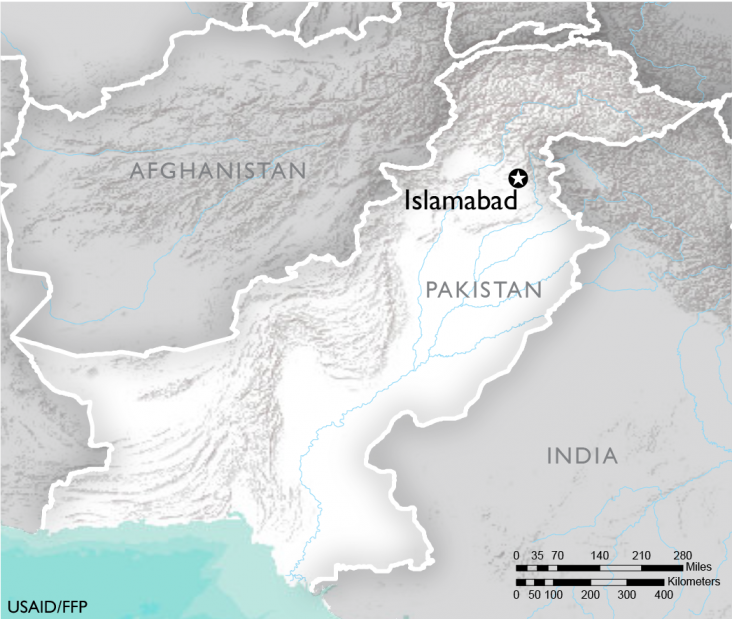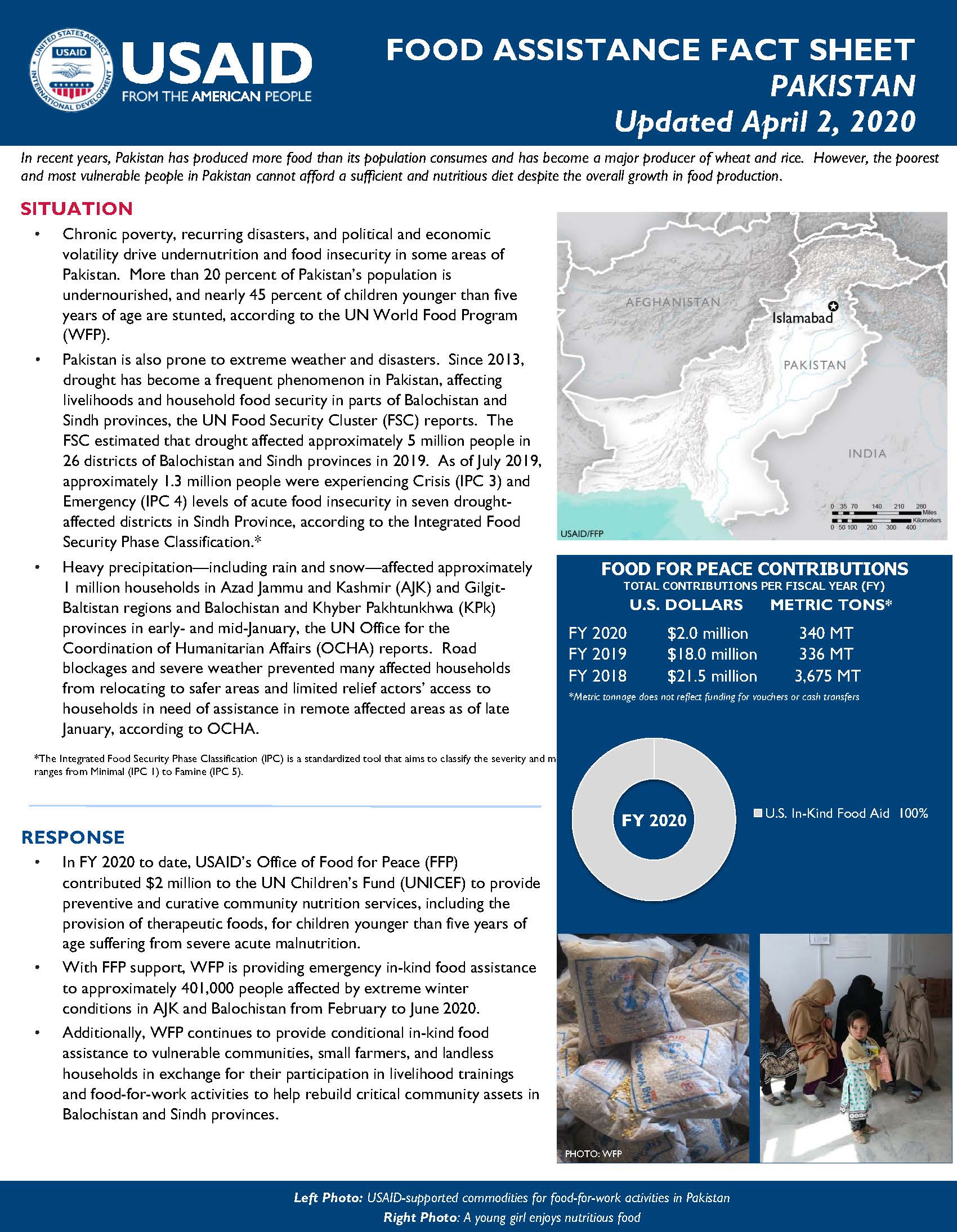Home » What We Do » Agriculture and Food Security » Food Assistance » Where We Work » Food Assistance Fact Sheet - Pakistan
- What We Do
- Agriculture and Food Security
- Democracy, Human Rights and Governance
- Economic Growth and Trade
- Education
- Environment and Global Climate Change
- Gender Equality and Women's Empowerment
- Global Health
- Humanitarian Assistance
- Transformation at USAID
- Water and Sanitation
- Working in Crises and Conflict
- U.S. Global Development Lab
Speeches Shim

April 2, 2020
In recent years, Pakistan has produced more food than its population consumes and has become a major producer of wheat and rice. However, the poorest and most vulnerable people in Pakistan cannot afford a sufficient and nutritious diet despite the overall growth in food production.
Situation
- Chronic poverty, recurring disasters, and political and economic volatility drive undernutrition and food insecurity in some areas of Pakistan. More than 20 percent of Pakistan’s population is undernourished, and nearly 45 percent of children younger than five years of age are stunted, according to the UN World Food Program (WFP).
- Pakistan is also prone to extreme weather and disasters. Since 2013, drought has become a frequent phenomenon in Pakistan, affecting livelihoods and household food security in parts ofBalochistan and Sindh provinces, the UN Food Security Cluster (FSC) reports. The FSC estimated that drought affected approximately 5 million people in 26 districts of Balochistan and Sindh provinces in 2019. As of July 2019, approximately 1.3 million people were experiencing Crisis (IPC 3) and Emergency (IPC 4) levels of acute food insecurity in seven drought-affected districts in Sindh Province, according to the Integrated Food Security Phase Classification.
- Heavy precipitation—including rain and snow—affected approximately 1 million households in Azad Jammu and Kashmir (AJK) and Gilgit-Baltistan regions and Balochistan and Khyber Pakhtunkhwa (KPk) provinces in early- and mid-January, the UN Office for the Coordination of Humanitarian Affairs (OCHA) reports. Road blockages and severe weather prevented many affected households from relocating to safer areas and limited relief actors’ access to households in need of assistance in remote affected areas as of late January, according to OCHA.
*The Integrated Food Security Phase Classification (IPC) is a standardized tool that aims to classify the severity and magnitude of acute food insecurity. The IPC scale, which is comparable across countries, ranges from Minimal (IPC 1) to Famine (IPC 5).
Food Assistance Fact Sheet - Pakistan ![]() (pdf - 289k)
(pdf - 289k)
Response
- In FY 2020 to date, USAID’s Office of Food for Peace (FFP)contributed $2 million to the UN Children’s Fund (UNICEF) to provide preventive and curative community nutrition services, including the provision of therapeutic foods, for children younger than five years of age suffering from severe acute malnutrition.
- With FFP support, WFP is providing emergency in-kind food assistance to approximately 401,000 people affected by extreme winter conditions in AJK and Balochistan from February to June 2020.
- Additionally, WFP continues to provide conditional in-kind food assistance to vulnerable communities, small farmers, and landless households in exchange for their participation in livelihood trainings and food-for-work activities to help rebuild critical community assets in Balochistan and Sindh provinces.
Food for Peace Contributions
Total Contributions:
| U.S. Dollars | Metric Tons | |
|---|---|---|
| Fiscal Year 2020 | $2.0 million | 340 MT |
| Fiscal Year 2019 | $18.0 million | 336 MT |
| Fiscal Year 2018 | $21.5 million | 3,675 MT |
* Metric tonnage does not reflect funding for vouchers or cash transfers.


Comment
Make a general inquiry or suggest an improvement.